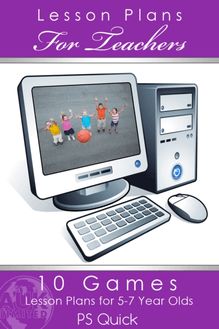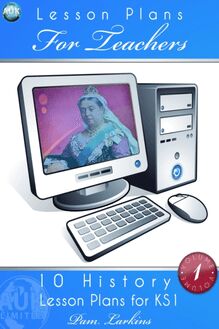10 History Lesson Plans for KS1 - Volume 1 , livre ebook
26
pages
English
Ebooks
2011
Vous pourrez modifier la taille du texte de cet ouvrage
Obtenez un accès à la bibliothèque pour le consulter en ligne En savoir plus
Découvre YouScribe en t'inscrivant gratuitement
Découvre YouScribe en t'inscrivant gratuitement
26
pages
English
Ebooks
2011
Vous pourrez modifier la taille du texte de cet ouvrage
Obtenez un accès à la bibliothèque pour le consulter en ligne En savoir plus
Publié par
Date de parution
16 décembre 2011
Nombre de lectures
3
EAN13
9781849899215
Langue
English
Publié par
Date de parution
16 décembre 2011
Nombre de lectures
3
EAN13
9781849899215
Langue
English
Title Page
10 HISTORY LESSON PLANS FOR KS1
Volume 1: Famous People and Events
Pam Larkins
Publisher Information
10 History Lesson Plans for KS1 published in 2011 by
Andrews UK Limited
www.andrewsuk.com
This book is sold subject to the condition that it shall not, by way of trade or otherwise, be lent, resold, hired out or otherwise circulated without the publisher’s prior written consent in any form of binding or cover other than that in which it is published, and without a similar condition being imposed on the subsequent purchaser.
Copyright © 2011 Pam Larkins
The right of Pam Larkins to be identified as author of this book has been asserted in accordance with section 77 and 78 of the Copyrights Designs and Patents Act 1988.
Introduction
These 10 History Lessons cover the programs of study for Key Stage 1 History as set out in the National Curriculum and are also based around the QCA topics Homes, Toys, Florence Nightingale, Fire of London and Guy Fawkes.
Within each lesson are opportunities to develop chronological understanding, knowledge and understanding of events, people and changes in the past, historical interpretation and enquiry.
Each lesson includes an historical account of the person’s life or event, a list of resources and practical activities, lesson objectives, outcomes and extension activities for cross curricular work that include ICT opportunities as well as assessment.
Lesson 1
Queen Victoria and life in Victorian times
Learning Objectives and Outcomes
•Children will be able to talk about their own family and life today
•They will compare their lives to those of people living in Victorian times
•They will place events and objects in chronological order
National Curriculum Programs of Study - History
•Knowledge, skills and understanding 1a, 1b, 2b, 4a, 4b
•Organisation and communication 5
•Breadth of study 6a, 6b, 6c
•Links with QCA History units 1 & 2
Introduction
Before the lesson ask children to bring in photographs of their own families.
In pairs, as talk partners, ask children to share their pictures and tell their partner about their families and the kinds of things they enjoy doing. Bring children together and ask if they know of any famous families. Show pictures of our Royal family. Explain we are going to learn about Queen Elizabeth’s great, great grandmother, Victoria
Main Lesson
With the aid of pictures tell the story of Victoria from a child:
Victoria’s parents, Prince Edward and Princess Victoria Mary came to England from Germany just before Victoria was born on the 24th May, 1819. Sadly her father died eight months after she was born.
Because Victoria was an only child she had a very lonely childhood. She played all by herself and spent most of the day in her nursery at the top of the house. She was looked after by a nurse who made sure she was well behaved and well fed. She had no friends to play with so she played with her wooden dolls instead. She had over 100 and dressed them to look like people she knew. She also had a dog, called Dash, who she loved, and she would dress him up too.
She only saw her mother at tea time and even then she was only allowed to stay for a short time.
When Victoria was five a governess came from Germany to teach her lessons at home and she learnt to speak French and German although her favourite lesson was art. She was also taught to walk properly with her back straight and her head held high. Her governess would pin a piece of holly under her chin to make sure she kept it up.
When she was seventeen her cousin, Albert, came from Germany to visit her and she loved having him to stay because he was about the same age. He would play the piano and she would sing. When he had to go back to Germany she was very sad.
When Victoria was 18 the King of England died and she became Queen. Two years later, when she was 20, she married Albert. They had nine children and during their lives many things changed in England. Most children did not go to school and many very young children worked in the factories and mines. New machines were built and for the first time there were railways so that people could travel around more quickly.
Prince Albert died when he was 42 and Victoria was very sad and after that she always dressed in black. She lived until she was 82 and was Queen of England for 64 years.
Activity: Give children a worksheet, depicting main events in Victoria’s life, to illustrate and order .
Plenary
Share worksheets and agree correct order. Use photographs from introductory session and give out to children. Get them to arrange them in correct chronological sequence on timeline or drag and drop on interactive whiteboard.
Resources
Picture of our Queen and royal family. Range of pictures of Queen Victoria from a child to old age, including one with Albert and also her children. String and pegs for timeline on which to pin these pictures or pictures on an interactive whiteboard to drag and drop. Worksheet on Victoria’s life.
Assessment
•Can children order correctly events in Victoria’s life?
•Can they say how Victoria’s childhood was different to their own?
•Can they describe two things that were different in Victorian times?
Extension Activities
Children could compare their toys to those that Victoria had and others that were available in Victorian times.

